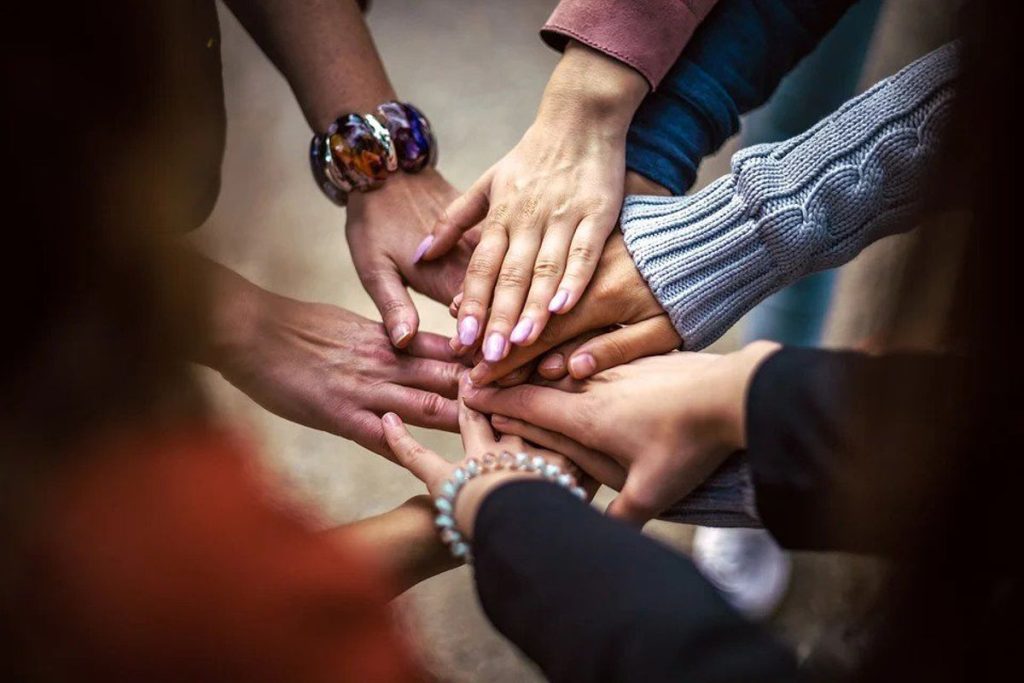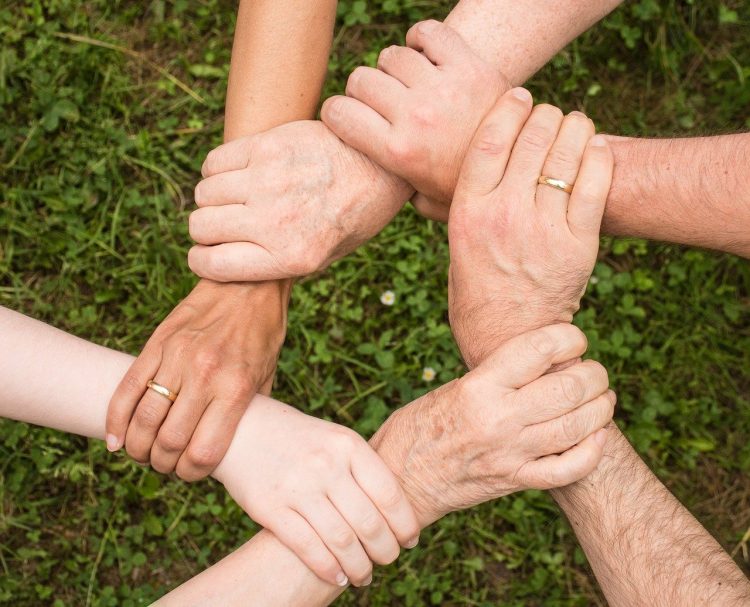In today’s fast-paced and often fragmented society, communities are more important than ever. A strong, connected community can provide invaluable support, not just in times of crisis but also in everyday life. Whether it’s dealing with a personal loss, navigating a global pandemic, or simply managing the daily stressors of life, a robust mutual support network can make all the difference. Building such a network, however, requires effort, commitment, and a shared understanding of the power of collaboration and support.
In this article, we will explore how to build a more resilient and supportive community, where individuals come together to face challenges collectively. Through intentional connection, shared resources, and a commitment to each other’s well-being, communities can create a foundation of mutual support that strengthens everyone involved.
1. Foster Open Communication and Active Listening
The foundation of any strong support network lies in clear, open communication. Building mutual support requires that community members feel safe and encouraged to express their thoughts, needs, and concerns. Only through communication can individuals identify where help is needed and how it can be provided.
A. Encourage Regular Community Meetings and Discussions
One of the most effective ways to foster open communication is by organizing regular community gatherings—whether in-person or virtual—where individuals can openly discuss challenges, share experiences, and offer help. These meetings should be inclusive, welcoming people of all backgrounds, and should provide a platform for everyone to speak.
- How it helps: Regular discussions promote transparency, trust, and understanding. When people share their concerns and struggles, others feel empowered to offer support. This also helps to identify areas of common need and collective action.
B. Practice Active Listening
Active listening goes beyond hearing words—it’s about understanding the emotions and needs behind what is being said. Encourage community members to practice active listening, which helps create a more empathetic and supportive environment.
- How it helps: When people feel truly heard, they are more likely to trust others and become more engaged in offering support. Active listening strengthens bonds and ensures that individuals feel understood and valued.
2. Create Shared Resources and Support Systems
One of the most powerful ways to build a mutual support network is by creating shared resources that can be accessed by everyone. These resources help community members support one another through both big and small challenges. This could be in the form of time, skills, knowledge, or material resources.
A. Develop a Community Resource Bank
A resource bank is essentially a shared pool of resources—be it physical items (such as tools, food, or clothing) or intangible assets (like skills, time, or expertise). Community members can contribute what they have and borrow or access what they need.
- How it helps: By pooling resources, everyone in the community benefits. Whether it’s providing food for someone in need, offering childcare for a single parent, or lending a neighbor a tool, resource sharing promotes cooperation and reduces individual burdens.
B. Establish Peer Support Networks
Peer support networks are a fantastic way to ensure that people have access to guidance, advice, and emotional support from others who are in similar situations. This can be particularly effective in addressing mental health issues, caregiving responsibilities, or work-life balance challenges.
- How it helps: Peer support builds a sense of camaraderie and understanding. Knowing that someone has walked a similar path or faced similar challenges can help people feel less alone, more understood, and more capable of overcoming obstacles.
3. Build a Culture of Volunteering and Mutual Help
A community that values volunteerism and mutual assistance is better equipped to weather any storm. When people actively volunteer their time, skills, and resources to help others, the entire community becomes stronger and more interconnected.
A. Organize Community Volunteer Events
Volunteering as a group not only benefits the individuals who are receiving help but also strengthens the bonds between those who are providing support. Organize events like neighborhood cleanups, charity fundraisers, or skills workshops that bring people together for a shared purpose.
- How it helps: Volunteering fosters collaboration, builds trust, and creates a sense of belonging. It encourages individuals to see their neighbors not as strangers, but as partners in creating a better community.
B. Recognize and Appreciate Volunteers
To ensure that the culture of volunteering remains strong, it’s important to recognize and appreciate those who contribute to the community. This could be through simple gestures of thanks or through larger celebrations of volunteer efforts.
- How it helps: Recognition boosts morale and encourages more people to get involved. When people see that their contributions are valued, they are more likely to continue helping and inspire others to do the same.
4. Encourage Collaboration Among Different Groups
In many communities, there are various groups and organizations—schools, religious institutions, sports clubs, cultural organizations—that operate independently. While these groups often serve specific needs, they can be powerful allies when they collaborate. Working together across different sectors can create a stronger, more comprehensive support network.
A. Partner with Local Organizations
Community-based organizations such as food banks, health clinics, youth programs, and shelters often have resources or expertise that can greatly benefit the wider community. Partnering with these organizations creates a more organized and effective approach to addressing local challenges.
- How it helps: By partnering with established organizations, your community can leverage additional resources, expert advice, and wider-reaching support systems. This collaboration helps the community meet challenges more efficiently and comprehensively.
B. Create Cross-Community Initiatives
Building connections between different community groups can provide opportunities for cross-pollination of ideas, skills, and resources. For example, a local school could collaborate with a nearby food bank to offer nutrition programs or organize charity drives.
- How it helps: When different community sectors work together, they can combine their strengths and reach a wider audience. It also fosters a sense of unity and shared responsibility for the overall well-being of the community.
5. Empower Leadership and Encourage Participation
For a mutual support network to thrive, leadership is crucial. However, leadership shouldn’t be top-down; it should be collaborative, with community members empowered to take initiative and drive change. This can be done by encouraging active participation and creating opportunities for people to step up as leaders.
A. Develop Community Leaders
Developing community leaders isn’t about positions of power—it’s about encouraging people to take ownership of initiatives that benefit others. These leaders can organize activities, manage resource banks, and advocate for community-wide needs.
- How it helps: Empowering individuals to take on leadership roles not only helps with the practical aspects of building a strong community but also encourages personal growth and responsibility. People who take ownership of projects feel more invested in the success of the community as a whole.
B. Create Opportunities for Everyone to Get Involved
A strong community thrives when everyone has the opportunity to get involved. Whether it’s through attending meetings, volunteering time, or sharing ideas, fostering an inclusive environment where everyone feels valued and encouraged to participate strengthens the collective effort.
- How it helps: When people feel that their contributions matter, they are more likely to stay engaged. This broad participation ensures that the support network is diverse, adaptable, and representative of the entire community.

6. Be Adaptable and Resilient in the Face of Challenges
Challenges, whether personal or communal, are inevitable. However, communities that are flexible and resilient in the face of adversity are better able to respond to these challenges and emerge stronger.
A. Build Community Resilience through Preparedness
Create strategies for addressing unforeseen events, such as natural disasters, economic downturns, or personal crises. Having a plan in place that outlines who to contact, what resources are available, and how to coordinate efforts can ensure a swift and organized response.
- How it helps: When the community is prepared, individuals feel more secure and capable of handling difficult situations. Resilient communities that are ready for challenges can respond quickly and minimize the negative impact of unforeseen events.
B. Focus on Long-term Well-being
Supporting the immediate needs of the community is important, but focusing on long-term well-being is equally crucial. Create programs that help people build skills, gain access to education, and maintain financial stability, so the community is better equipped to handle future challenges.
- How it helps: Long-term focus helps ensure sustainability and continuous growth within the community. By addressing both short-term needs and long-term goals, you create a community that is stronger and more capable of facing whatever challenges arise.
Conclusion: A Stronger Community Built on Mutual Support
Building a strong mutual support network in your community is an ongoing process that requires commitment, effort, and collaboration. By fostering open communication, creating shared resources, encouraging volunteerism, collaborating across groups, empowering leadership, and focusing on resilience, your community can come together to face any challenges that come its way.
In the end, the strength of a community lies in the people who make it up. When individuals support one another, both in good times and bad, they create a network that benefits everyone. So, take the initiative—reach out to a neighbor, join a local group, or organize an event. Your efforts could be the spark that helps your community thrive.

















































